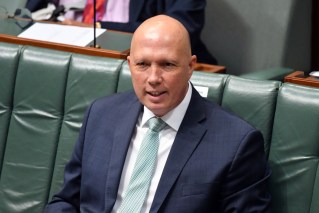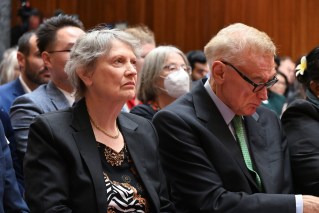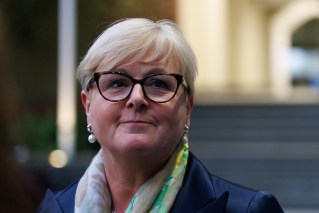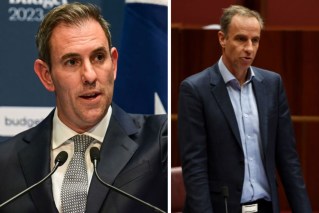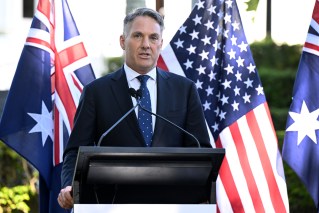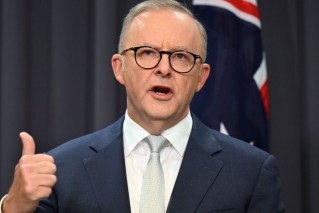Federal budget 2020: Josh Frydenberg reveals massive tax cuts and new wage subsidy


Photo: The New Daily
A massive new wage subsidy to get young people off welfare, huge tax cuts doling out $1000 to most workers, and a doubling of Medicare-subsidised mental health sessions are at the heart of Australia’s COVID recovery plan, with Josh Frydenberg unveiling an eye-watering deficit and a trillion-dollar debt figure.
“There is a monumental task ahead,” the Treasurer admitted in his budget speech on Tuesday night.
“But there is hope. Australia is up to the task.”
It’s a record deficit and the overall budget is underpinned by potentially unrealistic expectations of a COVID vaccine by the end of 2021.
Treasury is pinning its hopes on highly optimistic projections about a bounce back in household spending, but concede the unemployment rate may not recover to its pre-COVID level until 2024.
The Treasurer claims “nearly one million” jobs will be created by the budget, but unemployment is still expected to hit 8 per cent by year’s end.
And there’s almost nothing but further uncertainty and doubt for people stuck on the JobSeeker welfare payment.
The stage 2 tax cuts, formerly scheduled for 2022, are being yanked forward, but the controversial stage 3 cuts for top earners at this stage will come into effect as originally planned in 2024.
Tax cuts for low-and-middle-income earners will be introduced into Parliament on Wednesday, with Mr Frydenberg looking to steamroll the changes through immediately.
Tax cuts will flow
He said some 11.6 million Australians are in line for a tax cut, with the upper limit for the 19 per cent tax bracket lifted to $45,000 and the upper limit for the 32.5 per cent tax bracket lifted from $90,000 to $120,000.
Meanwhile, the Low and Middle Income Tax Offset will be extended for another year.
With the tax cuts to be backdated to July 1, 2020, people will see small benefits in their pay packet as soon as Parliament passes the laws. Then, at the end of the financial year, people will get a larger lump sum in their tax return.
“More than seven million Australians will receive tax relief of $2000 or more,” Mr Frydenberg said in his speech.
However, that comparison is to the 2017-18 financial year – before the stage 1 tax cuts, which are currently in force, were legislated. In reality, tonight’s tax cuts are actually worth about $1080 a year, or $20 a week, to most workers – thanks almost entirely to the one-year extension of the Low and Middle Income Tax Offset.
Once the LMITO is withdrawn next year, most workers will go back to paying the same tax they paid last year.
Nothing like comparing a tax change with 2017-18 to inflate it.
Why stop there?— Michael Pascoe (@MichaelPascoe01) October 6, 2020
The massive tax cuts come as the eye-watering deficit and gross debt was revealed to hit $213.7 billion and $872 billion respectively.
The debt will climb to an astonishing $1.016 trillion next year, topping out at $1.138 billion in 2023-24.
The government expects the deficit to instantly cut in half by 2021-22, however, forecasting only a $112 billion deficit that year.
Employment will continue at high levels and is only forecast to drop 1 percentage point a year over the next few years.
It’ll be 2023-24 before it hits 5.5 per cent, near where it was before the pandemic.
But the more optimistic news is that the unemployment rate is tipped to be at 8 per cent by Christmas, down from a recent prediction of 10 per cent.
It comes after stronger-than-expected job creation numbers recently, with the government crowing after 700,000 jobs returned to the economy last month.
Despite the lingering unemployment, however, there’s no news on the JobSeeker welfare payment.
Job seekers left in the dark
The $550-per-fortnight Coronavirus Supplement, which effectively doubled the unemployment benefit, has already been slashed to $250 per fortnight, and is due to cease completely by December 31.
There is zero mention of what will happen to it after then.
However, young JobSeeker recipients will get a boost to their job prospects, with employers being offered up to $200 a week in the form of a wage subsidy if they take on people under the age of 35.
People on the welfare payment, who are employed in a job for at least 20 hours a week, will be given access to a ‘JobMaker hiring credit’, worth $200 a week for people aged under 30, and $100 a week for those aged 30 to 35.
“Treasury estimates that this will support around 450,000 jobs for young people,” Mr Frydenberg said.
“We owe it to the next generation to ensure a strong economy so that their lives are filled with the same opportunities and possibilities we have enjoyed.”
The biggest benefit to welfare will flow to almost every recipient except those on JobSeeker or Youth Allowance.
The government will make two $250 payments in coming months to people on the age pension, disability support pension, carers allowance and payments, veterans payments, but not to those on unemployment or youth payments.
The effects of the pandemic on physical health are obvious, but governments have focused increasingly on mental health, too.
The number of Medicare-subsidised psychologists visits will double, from 10 to 20, a reform for which mental health advocates and charities have long pleaded.
It’s a “jobs, jobs, jobs” budget, the government has continually said.
Mr Frydenberg said “nearly one million” would be created by this budget – but there’s not much for those 8 per cent of people who will still be on the unemployment queues by the end of the year.
The budget offers no help or certainty to JobSeeker recipients.
Little is known about what will happen to the unemployment rate after December, and the government is not saying when it will announce a permanent change to the JobSeeker rate.

